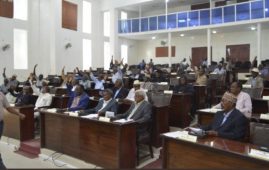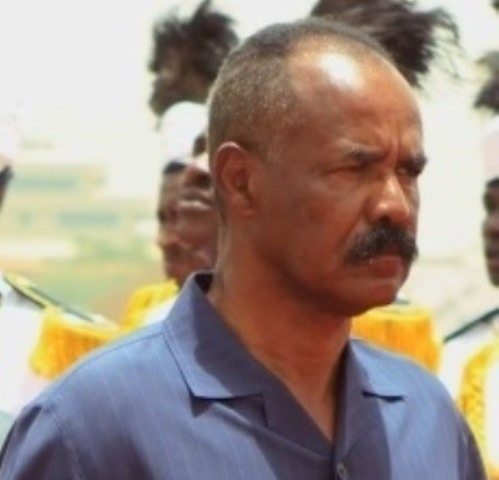The UN talks in Durban, South Africa, got adaptation and the response to climate change "approximately right", which is better than "being precisely wrong", a tired Naderev Sano, Philippines’ chief climate change negotiator, said as he emerged from two consecutive emotionally charged all-night sessions.
Poor countries and NGOs, which are dealing with the fallout from more frequent and intense natural hazards like floods and cyclones, made a breakthrough in Cancun, Mexico, in 2010, when adaptation was given the same weight as efforts to mitigate climate change in the UN climate change deal. Riding on Cancun’s success, expectations for adaptation were high in 2011.
Some progress was made in Durban in this regard, such as setting up an advisory body on adaptation, the operationalization of the Green Climate Fund, and initiating a dialogue to address loss and damage as the impact of climate change unfolds.
But the "devil is in the detail", as many poor countries found out, and the negotiating tracks dealing with adaptation have been "watered down". Many voiced their concerns in the open debates in Durban.
Most of the thorny issues were tied to money and the inability of rich countries to commit in view of the economic crisis in their backyard. "We sensed a lot of resistance on that front, and we understand," said a leading climate change negotiator from an African country.
"There seemed to be a lack of urgency," said Sano. "But multilateral processes always involve baby steps."
IRIN takes a closer look at some of the negotiating tracks and issues that matter to poor countries, and the NGOs trying to support and assist them.
Lack of clarity on cuts
Two decisions to cut emissions were taken in Durban: the extension of the Kyoto Protocol – the only global deal to cut emissions from 2013 onwards – and the new deal to reduce emissions after the Protocol expires in 2017. (Shortly after the talks Canada, one of the largest emitters, angered environmentalists by announcing its imminent withdrawal from the Kyoto treaty). But neither reflects the urgency needed to make deeper cuts sooner.
"This makes steps to support adaptation even more urgent for poor countries like us. It seems like the world realizes we are headed towards a catastrophe, but they don’t seem to understand," pointed out Qazi Ahmad, one of the lead negotiators for Bangladesh.
If countries do not set higher targets to reduce greenhouse gas emissions by 2020, the planet is looking at an increase in temperature of beyond two degrees Celsius within this century, the UN Environment Programme (UNEP) warned in a report issued in the run-up to the Durban conference.
The decision on how much to cut from 2013 to 2017 will only be taken in 2012, after a review. The good news is that the new global deal to cut emissions after the Kyoto Protocol ends will include major emitters like the US, China and India, but these countries will only make deeper cuts from 2020 forward. That might be too late because it will lock in high temperatures for poor countries, said Sarah Wiggins, a climate change policy expert at Tearfund, a UK-based development NGO.
The Climate Action Tracker, an independent website run by scientists, said on 11 December that the current proposals to reduce emissions will push up global temperature by about 3.5 degrees Celsius by 2100.
The Intergovernmental Panel on Climate Change (IPCC) regards global warming of two degrees Celsius as irreversible and catastrophic, bringing water stress in arid and semi-arid countries, more floods in low-lying coastal areas, coastal erosion in small island states, and the elimination of up to 30 percent of animal and plant species.
The UNEP report found that the gap between the required emissions cuts and pledges to cut them had widened in the past year. Higher temperatures mean countries will have to dig deeper in their pockets for adaptation. "This is a matter of grave concern for us," said Wiggins.
Estimates indicate that the highest adaptation costs will be felt in West Africa and South Asia, where residual damage (not be covered by adaptation efforts) amounting to 3.5 percent of the regional gross domestic product (GDP) will result from a rise of two degrees Celsius. Costs of between five and six percent of GDP will result from a three-degree Celsius rise, according to Climate Action Tracker.
But decisions about how much to cut by and when, has serious economic implications and involves a lot of consultation, and countries need more time, the UK’s secretary for climate change and energy, Chris Huhne, explained to IRIN.
The countries also want to wait until the next IPCC assessment is released in 2013/14 to guide them on how much to cut.
Green Climate Fund
The conference accepted the report by a transitional committee recommending the Green Climate Fund, to provide money to adapt and to mitigate should be established. But where the Fund’s secretariat will be housed remains to be decided, said Omar Elanni, a member of the committee.
Developing countries want the secretariat placed within the UN Framework Convention on Climate Change (UNFCCC), where they feel it will be more independent, rather than under the Global Environment Facility (GEF), the preferred choice of some developed countries.
Another contentious issue also needs to be addressed. The draft governing text of the Fund, approved in Durban, allows the private sector to access money from the Fund to for any programmes they might be involved in to mitigate or adapt in developing countries.
"This is scary, as it means scarce public money [raised by taxpayers in developed countries] could be used to subsidize private sector entities. to administer projects which may not be a priority for developing country governments," said Harjeet Singh, the international Climate Justice Coordinator at NGO ActionAid.
Adaptation committee
The good news is that this committee, which will function as an advisory body on adaptation to countries, has now been given meat and made operational. But the committee, which poor countries hoped would report directly to countries at the highest level in the climate change talks, will instead do so through other subsidiary bodies. "This step does not enhance the status and importance of adaptation," said Farrukh Khan, Pakistan’s lead negotiator.
Reporting directly to the highest level would have helped the committee ensure coherence of adaptation work across the various strands and mechanisms, said ActionAid’s Singh. On a positive note, Sandeep Chamling, an adaptation expert with WWF said 10 of the 16 committee members would be from developing countries, reflecting the importance of adaptation for poorer countries.
Loss and damage
Perhaps the most significant outcome of the Cancun talks for developing countries was the call to set up a programme to consider ways of addressing loss and damage associated with climate change in vulnerable countries.
This has opened the way to the possibility of compensation for poor countries on account of climate change for the first time, and also the opportunity to use tools such as international insurance mechanisms to offset the risk.
In Durban the programme delivered a six-page text outlining the problems of trying to assess loss and damage, especially gaps in information, and called for more research. It also called for a technical paper on the impact of slow-onset events such as droughts.
Kashmala Kakakhel, of Climate and Development Knowledge, writes in a blog that the text "has elevated the. debate in the international discussion, as there are a lot of questions around the concept of loss and damage and no clear consensus on what it entails."
National Adaptation Plan
In Cancun, the Least Developed Countries (LDCs) seen as most vulnerable to climate change were asked to develop their own medium- and long-term National Action Plan to adapt to climate change. But there was no money in the LDC Fund, set up under the UNFCCC, to do that. There is a provision in the Green Climate Fund to finance the NAPs, but no funds as yet.
Reducing Emissions from Deforestation and forest Degradation (REDD+)
This mechanism provides incentives to developing countries to conserve and plant more forests. Deforestation contributes between 12 percent and 20 percent of the world’s annual greenhouse gas emissions – about the same as the transport sector, according to the IPCC.
Progress on talks on the mechanism have been stalled by the weak reference to safeguards such as protecting the rights of the indigenous forest communities, and lack of clarity on financing the mechanism. Various options, including the sale of carbon credits, have been proposed, but these issues still remain in the final text issued in Durban.
Under the finance options, developing countries and communities can trade the carbon credits earned by conserving forests and sell them to industries spewing greenhouse gases in the developed world to offset these emissions. Many environmental groups find this unacceptable.
Kevin Conrad, Papua New Guinea’s ambassador to the talks and the man credited with developing REDD, said he was against carbon credits being sold to offset emissions.
Kate Dooley, of FERN, a European NGO, pointed out there were no carbon markets for forests, and carbon markets generally had slumped.
Conrad underlined the need for strong safeguards and efforts to ensure that emission reductions achieved through forest conservation are measured, reported and verified in a credible manner to revive the value of carbon.
***********
This article first appeared on Dec. 13, 2011 on IRIN (the humanitarian news and analysis service of the UN-OCHA), with the title ‘Climate Change: Progress in Durban, but not enough’. Items from IRIN are published in this blog with a written permission to do so. Yet, this doesn’t necessarily indicate an endorsement of the claims therein.
Check the Egypt archive for previous and forthcoming posts.






2 Reactions on this Article
Comments are closed.
Leave a Comment